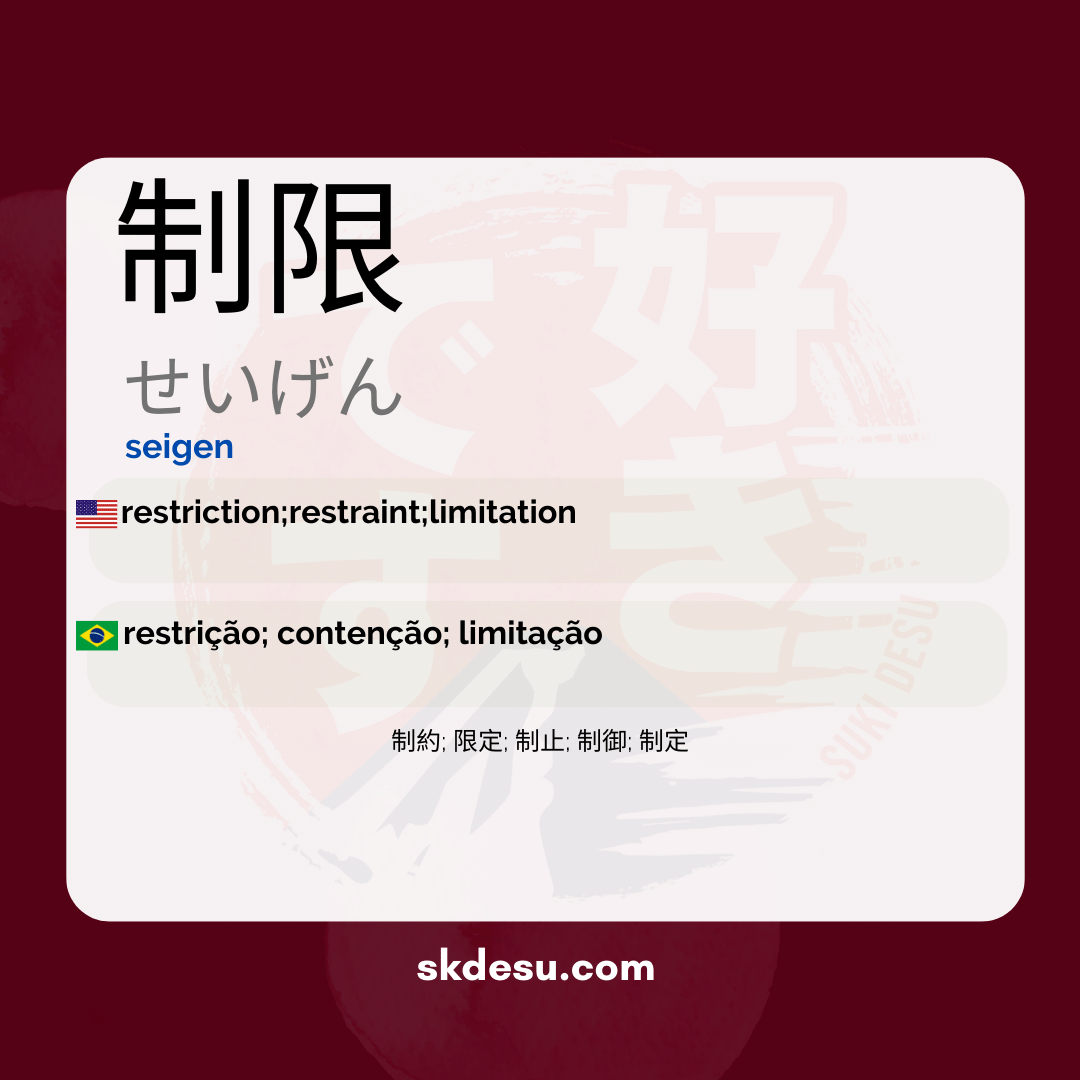Translation and Meaning of: 制限 - seigen
The Japanese word 制限 (せいげん, seigen) is an essential term for anyone studying the language or interested in Japanese culture. It frequently appears in everyday, legal, and even technological contexts, carrying meanings that go beyond a simple translation. In this article, we will explore what 制限 really means, how it is used in daily life, and what nuances make it such a relevant expression.
If you have already come across this word in animes, news, or documents, understanding its correct use can prevent confusion. Furthermore, knowing its origin and practical applications helps to memorize it more easily. Let’s unveil everything from the composition of the kanjis to examples of how it is socially perceived in Japan.
Meaning and usage of 制限
制限 is commonly translated as "restriction," "limitation," or "control," depending on the context. It describes something that imposes barriers or rules, whether in physical, legal, or abstract situations. For example, in Japanese airports, you may see signs with 手荷物制限 (tenimotsu seigen), indicating limits for carry-on baggage.
The term also appears in discussions about digital rights, such as アクセス制限 (akusesu seigen), which means "access restriction." Its versatility allows it to be used in both informal conversations and formal texts, always maintaining the idea of establishing boundaries or regulations.
Origin and composition of kanjis
The writing of 制限 combines two kanji with complementary meanings. The first, 制 (sei), represents "control" or "system," while 限 (gen) means "limit" or "boundary." Together, they reinforce the notion of something that is delineated by rules. This construction is not random — it reflects the precision of the Japanese language in creating terms that clearly convey their purpose.
It is worth noting that both kanjis are frequently used in other words. 制 appears in 制度 (seido, "system") and 限 in 期限 (kigen, "deadline"). Recognizing these patterns helps to expand vocabulary and understand the logic behind the formation of compound terms.
Tips for memorization and curiosities
An effective way to retain 制限 is to associate it with real-life situations. Imagine a sign in a park with 速度制限 (sokudo seigen), limiting the speed of bicycles. This type of visualization creates practical mental connections. Another strategy is to practice with flashcards, including phrases like 制限時間 (seigen jikan), which means "time limit".
Culturally, Japan has an interesting relationship with the concept of 制限 (seigen). Society values harmony and respect for rules, which leads to restrictions often being accepted as necessary. This is reflected in the daily use of the word, which rarely has a negative connotation when used in contexts of collective organization.
Vocabulary
Expand your vocabulary with related words:
Synonyms and similar words
- 制約 (Seiyaku) - Restrictions, limitations imposed on something
- 限定 (Gentei) - Limitation, particularly in terms of quantity or scope
- 制止 (Seishi) - Interruption or prohibition of an action, control over behavior
- 制御 (Seigyo) - Control, management of situations or behaviors
- 制定 (Seitei) - Establishment, creation of norms or rules
Related words
sei
system; organization; imperial command; laws; regulation; control; government; suppression; restriction; retention; establishment
Romaji: seigen
Kana: せいげん
Type: Noun
L: jlpt-n3
Translation / Meaning: restriction; containment; limitation
Meaning in English: restriction;restraint;limitation
Definition: To decide the scope or conditions of something.
Quick Access
- Vocabulary
- Writing
- Sentences
How to Write in Japanese - (制限) seigen
See below a step-by-step guide on how to write the word by hand in Japanese. (制限) seigen:
Example Sentences - (制限) seigen
See below some example sentences:
Seigen jikan ga arimasu
There is a time limit.
There is a time limit.
- 制限時間 - time limit
- が - subject particle
- あります - verb "exist" in polite form
Other Words of this Type: Noun
See other words from our dictionary that are also: Noun

